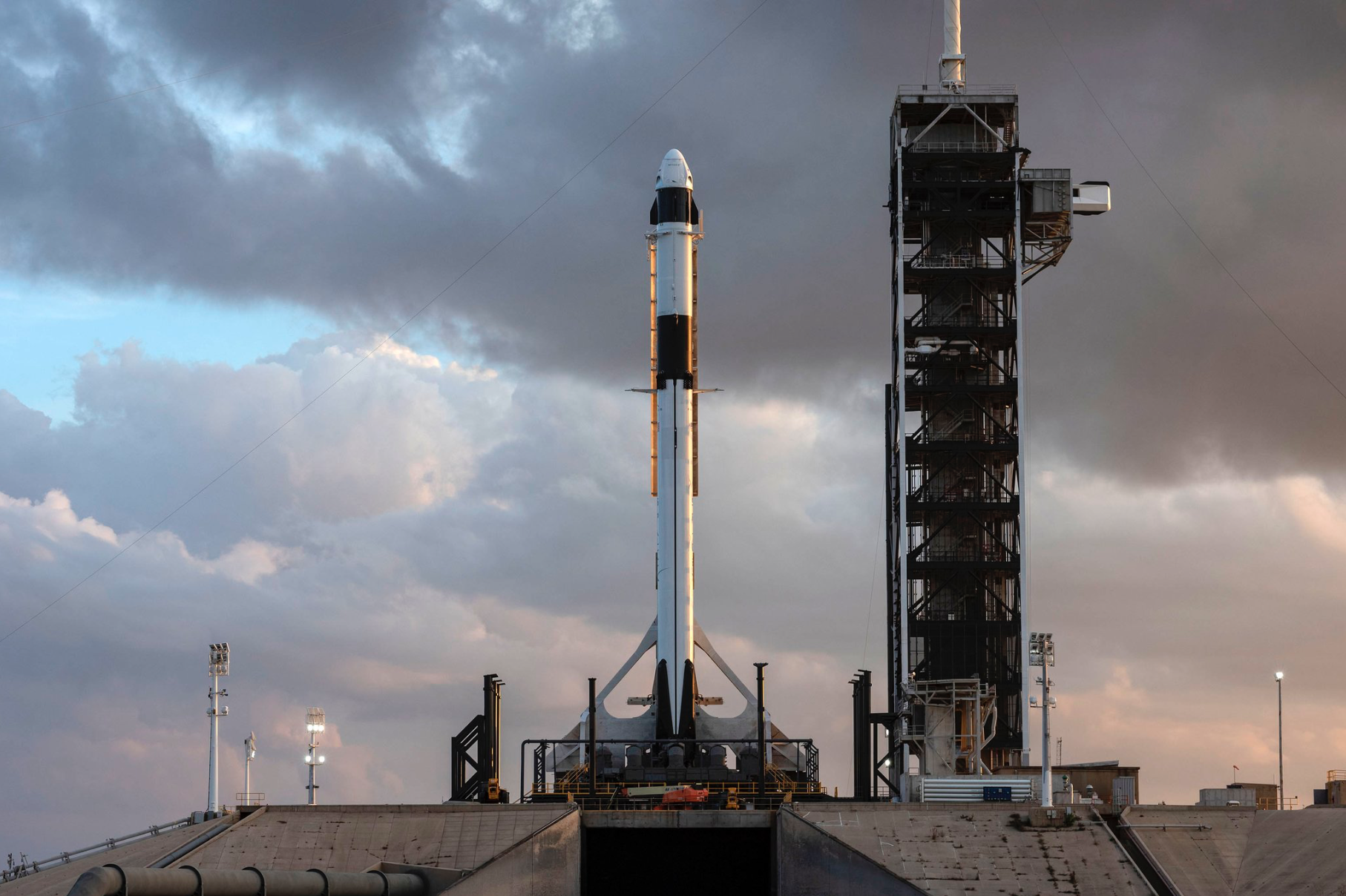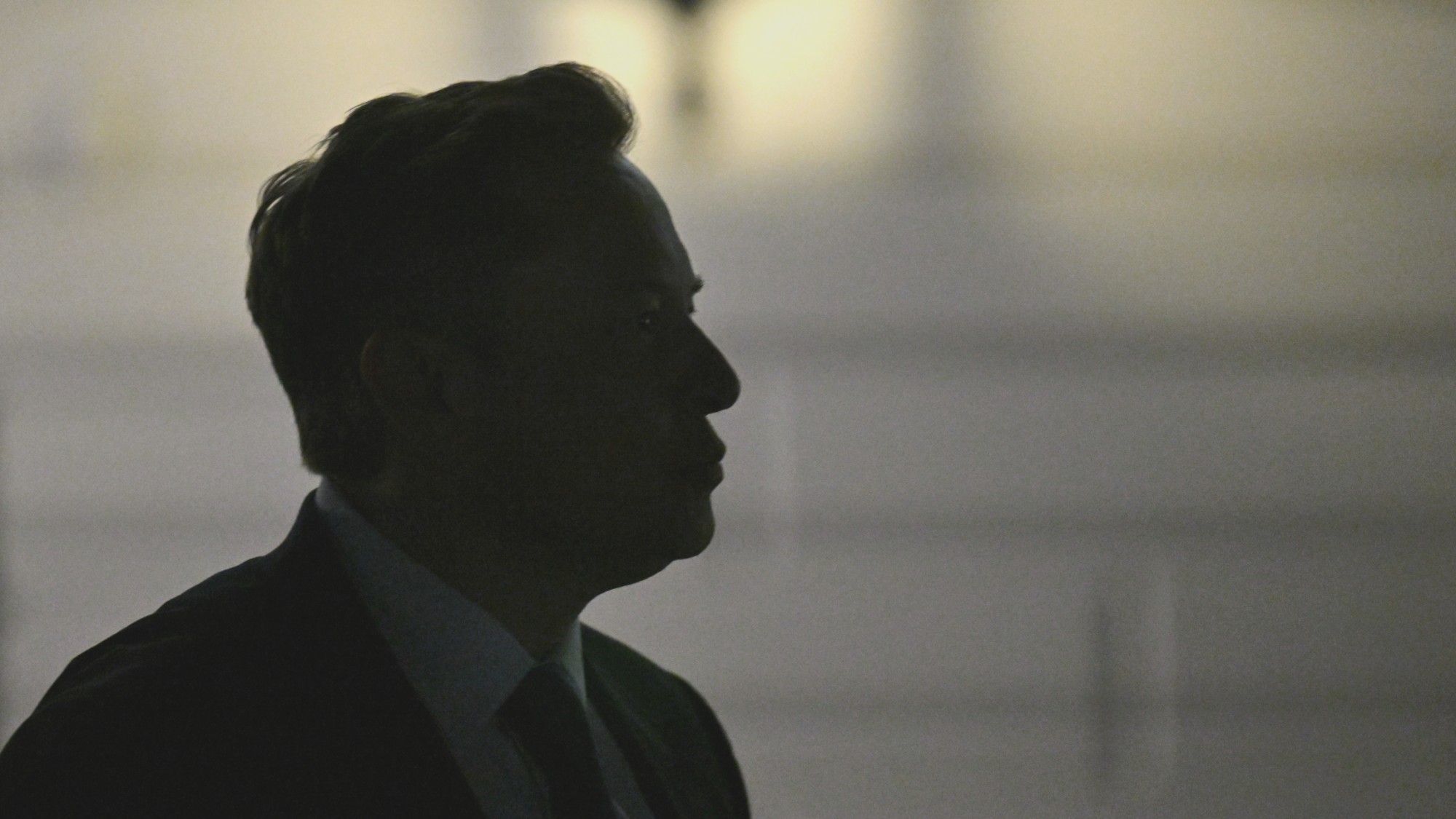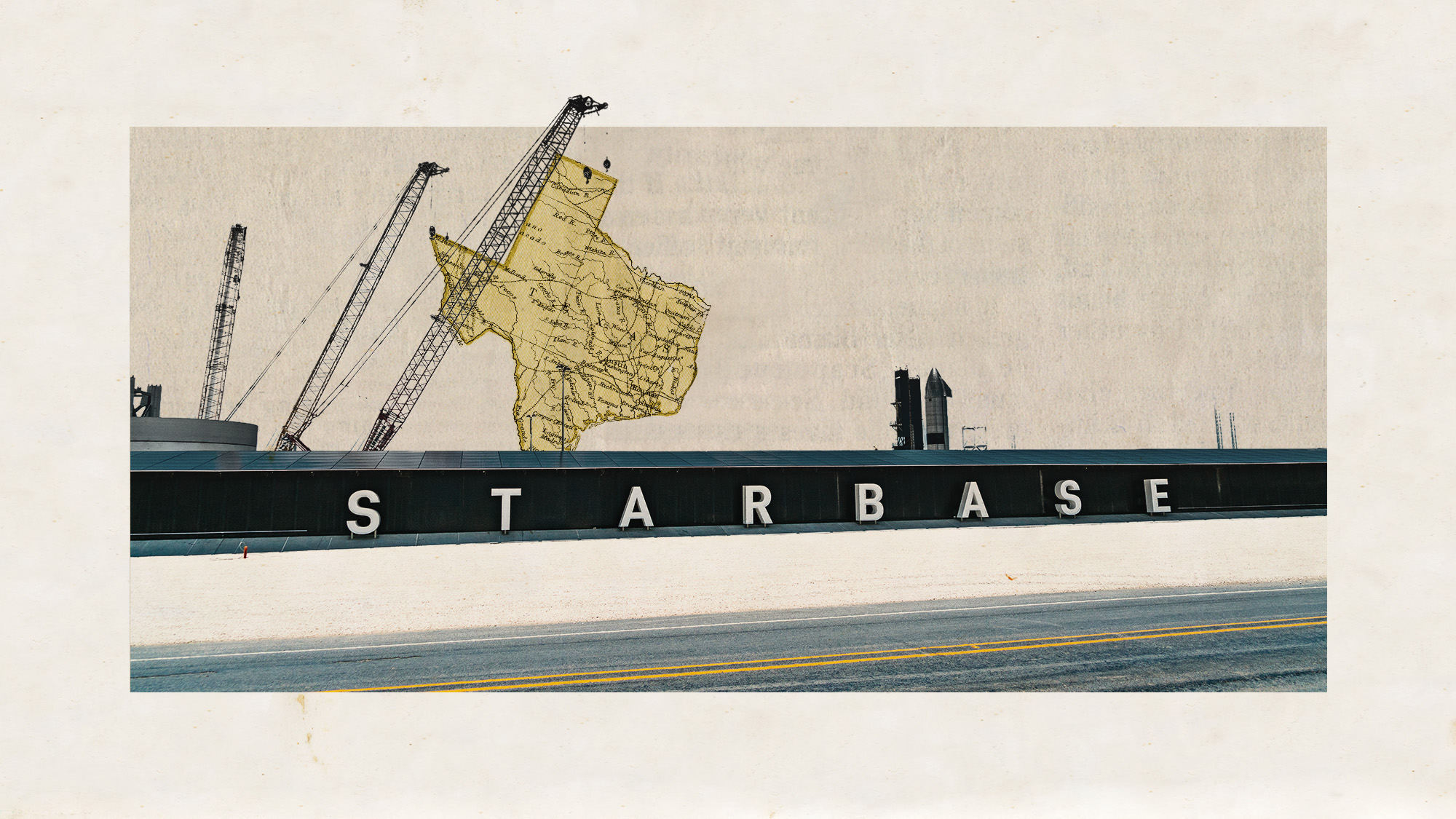SpaceX Crew Dragon: what is it and when does it launch?
Elon Musk targets the first manned mission from US soil since the Space Shuttle

SpaceX plans to kick off 2019 in style by launching a new spacecraft that will eventually see the first astronauts leaving US soil since the Space Shuttle programme ended in 2011.
The Elon Musk-founded aerospace company has posted pictures of the crew capsule aboard one of its Falcon 9 rockets on a launch pad at the Kennedy Space Center in Florida, as it gears up for the craft’s maiden voyage next week.
Musk has shared images of the futuristic walkway that will be used by astronauts to board the spacecraft, called Crew Dragon. He also posted a shot of the capsule’s door with a sign next to it saying: “You must be at least this tall to ride.”
The Week
Escape your echo chamber. Get the facts behind the news, plus analysis from multiple perspectives.

Sign up for The Week's Free Newsletters
From our morning news briefing to a weekly Good News Newsletter, get the best of The Week delivered directly to your inbox.
From our morning news briefing to a weekly Good News Newsletter, get the best of The Week delivered directly to your inbox.
The South African-born billionaire confirmed that the rocket and crew capsule will have cameras so the public can follow the launch, though he stressed that the mission “will be extremely intense”.
“Early flights are especially dangerous, as there’s a lot of new hardware,” he added.
With the craft’s launch on the horizon, here’s everything we know about SpaceX’s first manned spacecraft:
What is it?
A free daily email with the biggest news stories of the day – and the best features from TheWeek.com
Crew Dragon is a small spacecraft that is capable of carrying a team of four astronauts into space.
It’s based on SpaceX’s Dragon module, an unmanned craft that is used to transfer supplies and scientific equipment to the International Space Station (ISS), says Space.com.
SpaceX has used its regular Dragon on 16 missions to the ISS, though the crewed version will feature a number of updates, says Business Insider. This includes the repositioning of the craft’s solar panels, which will now be integrated into the vehicle rather than folding out when in orbit.

Musk’s company has yet to reveal the final design of the craft’s cabin, but concept images suggest the cockpit will be far more futuristic and spacious than the Russian Soyuz craft currently used to transport astronauts to the ISS.
For instance, crews aboard the Dragon can monitor and control the craft using touchscreen panels, whereas the Soyuz vehicle’s cabin appears to be more cramped and is covered in buttons.
When will it launch?
The first mission is expected to begin on 17 January after an unspecified issue prevented the launch from taking place on 7 January, according to CNet.
Crew Dragon will be placed atop one of the company’s reusable Falcon 9 rockets and the first mission will be unmanned, the tech site says. Instead, SpaceX plans to gather data on the craft during launch, orbit, docking with the ISS and landing.
However, Musk has hinted that fans may have to wait a little longer to see the launch, as he tweeted on 5 January that the first test is “about a month away”.
Provided the mission goes to plan, SpaceX will send astronauts Bob Behnken and Doug Hurley into orbit aboard the vessel in the summer, says Space.com.
What will SpaceX use it for?
To help Nasa and private companies to take astronauts into space from US soil.
Currently, only the Russian Federal Space Agency’s Soyuz craft is capable of taking humans into space, with missions launching from the Baikonur Cosmodrome in Kazakhstan.
Though the craft has been revised over its 50-year existence, the Soyuz vehicle is beginning to show its age and experts believe it will soon be replaced by cheaper and more modern alternatives, such as Crew Dragon, The Guardian reports.
With Russia and the US once again vying for supremacy, it seems as though the race to space is back on.
-
 Inside a Black community’s fight against Elon Musk’s supercomputer
Inside a Black community’s fight against Elon Musk’s supercomputerUnder the radar Pollution from Colossal looms over a small Southern town, potentially exacerbating health concerns
-
 X update unveils foreign MAGA boosters
X update unveils foreign MAGA boostersSpeed Read The accounts were located in Russia and Nigeria, among other countries
-
 What's Linda Yaccarino's legacy? And what's next for X?
What's Linda Yaccarino's legacy? And what's next for X?Today's Big Question An 'uncertain future' in the age of TikTok
-
 X CEO Yaccarino quits after two years
X CEO Yaccarino quits after two yearsSpeed Read Elon Musk hired Linda Yaccarino to run X in 2023
-
 Musk chatbot Grok praises Hitler on X
Musk chatbot Grok praises Hitler on XSpeed Read Grok made antisemitic comments and referred to itself as 'MechaHitler'
-
 Another Starship blast sets back Musk's Mars hopes
Another Starship blast sets back Musk's Mars hopesSpeed Read Nobody was killed in the explosion, which occurred in south Texas
-
 What Elon Musk's Grok AI controversy reveals about chatbots
What Elon Musk's Grok AI controversy reveals about chatbotsIn the Spotlight The spread of misinformation is a reminder of how imperfect chatbots really are
-
 Elon Musk's SpaceX has created a new city in Texas
Elon Musk's SpaceX has created a new city in TexasUnder The Radar Starbase is home to SpaceX's rocket launch site
